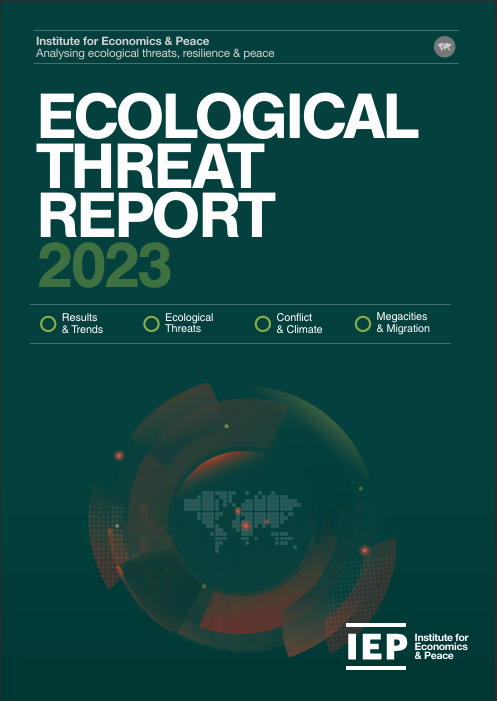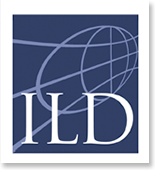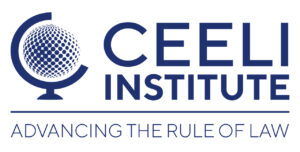Underscores an escalating risk to global ecological systems. In particular, it points out the expanding ecological threats that affect biodiversity and planetary health. Given these challenges, the report stresses the immediate and urgent need to tackle the twin crises of biodiversity loss and climate change, both unfortunate consequences of unsustainable resource utilization.
Alarmingly, the report discloses a substantial decline in wildlife populations since 1970, noting an average decrease of 69% in monitored wildlife populations. Even more importantly, it highlights the interlinked nature of biodiversity loss and climate change, asserting that addressing these issues in isolation will not effectively resolve the crises. Therefore, the report strongly advocates for holistic actions to reverse nature loss, enhance food production efficiency, minimize waste, and harness technology to manage Earth’s natural resources sustainably.
Key trends and results
Interestingly, it presents several key trends and findings directly related to ecological threats. These trends crucially underline the complex interactions between ecological threats, societal resilience, peace, and security. As a result, it emphasizes the importance of addressing environmental challenges to ensure a sustainable and peaceful future.
- Severity of Ecological Threats: Identifies four ecological risks: food insecurity, natural disasters, demographic pressure, and water risk, affecting 1.8 billion people in 30% of nations. By 2050, this number will rise to 2.8 billion, with significant increases in countries like Nigeria, the Democratic Republic of Congo, Tanzania, and Ethiopia.
- Regional Variances: Sub-Saharan Africa, the Middle East, North Africa, and South Asia face severe ecological threats and typically have lower peace levels, according to the Global Peace Index.
- Impact on Societal Resilience: Highlights the need to evaluate ecological risks to societal resilience. By 2050, about 1.1 billion people may live in countries with low resilience, intensifying problems such as malnutrition and forced migration. Without global intervention, ecological decline could amplify global insecurity and conflict.
- Population Displacement and Resource Competition: Countries with severe ecological threats and unstable conditions may face population displacement and resource competition. These impacts can cross borders, magnifying ecological shock consequences.
- Future Projections: Predicts a major rise in populations facing serious ecological threats, especially in sub-Saharan Africa, over the next 50 years, highlighting the pressing need for measures to tackle these challenges and increase resilience.
Overview
1 – Results and Trends
Provides a comprehensive summary of key findings and trends related to ecological threats. Specifically, it offers a detailed analysis of these threats, notably highlighting their severity, regional variations, and potential impacts on populations and societal resilience. In light of this, it emphasizes the pressing need for proactive measures to address these issues and, in turn, promote global peace and sustainability.
- Comprehensive Analysis: Covering 3,594 sub-national areas in 221 countries, the report represents 99.99% of the global population. It evaluates food insecurity, water risk, demographic pressures, and natural disasters to pinpoint countries at high risk from ecological threats and low societal resilience.
- Threat Severity: About 30% of countries affecting 1.8 billion people face major ecological threats. 2050 this may rise to 2.8 billion, with countries like Nigeria and Ethiopia significantly impacted. The indirect effects can be extensive, particularly in conflict regions.
- Methodology and Results: Categorizes threats into food insecurity, natural disasters, demographic pressure, and water risk. Countries with severe threats surpass certain thresholds in these categories. Scores are given based on the maximum threat severity, identifying Sub-Saharan Africa as facing the most severe ecological threats.
- Population Impact: By 2050, significantly more people, especially in sub-Saharan Africa, will live in areas with severe ecological threats like water scarcity, food insecurity, demographic pressure, and natural disasters, necessitating urgent attention.
- Global Instability: Ecological threats causing global instability and displacement are analyzed in this report, aiming to inform resilience-building policies and contingency plans with impartial, data-driven discussions.
2 – Ecological Threats
Explores specific global ecological challenges. It provides critical insights into threats such as water risk and food insecurity. Furthermore, it identifies regional vulnerability patterns, highlighting areas of concern. Most importantly, the report emphasizes the need for an integrated approach to tackle these interconnected challenges. Hence, such a comprehensive approach is vital to build resilience against environmental risks.
- Water Risk: Water risk, a major ecological threat, affects two billion people without safe drinking water and 3.6 billion without proper sanitation worldwide, emphasizing the urgent need to tackle global water scarcity and sanitation problems.
- Food Insecurity: Studies patterns of food insecurity worldwide, examining its links with conflict and environmental shocks. It underscores the importance of understanding these dynamics to build resilience in communities facing food access challenges.
- Regional Patterns: According to the GPI, it highlights sub-Saharan Africa, MENA, and South Asia as regions with significant ecological threats and low peace levels.
- Interconnectedness of Threats: Underscores the link between ecological threats, societal resilience, and peace, stressing the need to holistically address water scarcity, food insecurity, natural disasters, and demographic pressures to reduce conflict and instability risks.
- Resilience Building: Addressing ecological threats can bolster resilience to environmental shocks, reducing the risk of conflict and displacement. It urges proactive measures for sustainability and prosperity amidst ecological challenges.
3 – Conflict, Climate, and Ecological Threats
Examines the intricate interaction between environmental challenges, climate change, and conflict dynamics. In doing so, it delves into the complex relationship between ecological threats and armed conflict. Particularly, it emphasizes the role of climate change as a threat amplifier. It is important to consider environmental factors in conflict analysis. Additionally, the report underscores the need for proactive measures to reduce climate-related risks and promote peace and stability in vulnerable regions.
- Relationship Between Ecological Threats and Conflict: Explores the link between ecological threats, climate change, and armed conflict. It discusses how these threats can heighten conflict risk, especially in areas with past conflicts, weak institutions, and low resilience. The need to comprehend the complex relationship between environmental factors and conflict outcomes is emphasized.
- Climate Change as a Threat Amplifier: While amplifying existing vulnerabilities, climate change is not the sole cause of conflict. It increases conflict risk, long-term climate variations, ecological threats, historical conflicts, and governance challenges. Understanding these complexities is key to conflict prevention and resolution.
- Effects of Climatic Conditions on Armed Conflict: Climate variations and climate change impacts drive armed conflict by affecting resources, livelihoods, and social stability. It emphasizes the need to factor climate-related issues into conflict analysis and peacebuilding.
- Future Projections: Indicates that accelerated climate change impacts from carbon are expected within 80 years. Despite limited data on climate change and conflict, a surge is expected. Grasping climate-related risks is vital for conflict mitigation and sustainable development.
4 – Megacities and Migration
Discusses the issues arising from rapid urbanization, especially in megacities, and its impact on migration patterns. It highlights the intersection of ecological threats, migration dynamics, and urban sustainability. It emphasizes the necessity to address environmental challenges in rapidly expanding urban areas to enhance resilience, reduce risks, and ensure the well-being of urban populations amid ecological threats.
- Urbanization Trends: Highlights the growing trend of urbanization. By 2050, 70% of the global population is projected to live in urban areas, posing challenges to infrastructure, resource management, and social cohesion.
- Megacities and Ecological Threats: Megacities in troubled regions face sustainability issues due to rapid expansion. They grapple with water scarcity, unreliable food chains, and civil unrest. Systemic reforms are needed to address these challenges for long-term viability.
- Migration Dynamics: Explores how ecological threats like natural disasters and food insecurity can spur migration and conflict. It underscores the importance of understanding these factors for effective migration management and humanitarian action.
- Resilience Building in Megacities: Resilience in megacities, crucial for sustainable development, involves improving infrastructure, enhancing resource efficiency, and fostering social cohesion. Proactive measures can aid in adapting to environmental changes and reducing ecological risks.
5 – Policy Recommendations
Emphasizes the importance of policy interventions in addressing rising ecological threats and promoting sustainability. It suggests that by advocating integrated approaches, resilience building, conflict prevention strategies, and alignment with the Sustainable Development Goals (SDGs), policymakers can mitigate environmental risks, promote peace, and ensure community well-being in the face of ecological challenges.
- Policy Seminars: Outlines six policy seminars in 2021 attended by 60 experts from various sectors. The seminars aimed to address rising global ecological threats through effective policy and strategy exploration.
- Policy Recommendations: Emphasizes adopting proactive policies and measures to mitigate ecological threats, enhance resilience, and promote sustainable development. Policy recommendations include:
- Integrated Approaches: Promoting holistic strategies that address ecological challenges, societal resilience, and peace together. A comprehensive approach to water scarcity, food insecurity, natural disasters, and demographic pressures can reduce conflict and instability risks.
- Resilience Building: Building resilience in vulnerable areas, especially megacities facing ecological threats, is crucial. This includes enhancing infrastructure, promoting resource efficiency, and fostering social cohesion to adapt to environmental changes and reduce vulnerability.
- Conflict Prevention: Identifying ecological threats and climate change as possible conflict drivers is crucial. Implementing prevention strategies that consider these factors can promote peace and stability in conflict-prone regions.
- Sustainable Development Goals: Aligning policy with the UN Sustainable Development Goals (SDGs) addresses environmental challenges, promotes social inclusion, and boosts economic prosperity. Incorporating ecological considerations into policies contributes to achieving the SDGs and global sustainable development.




